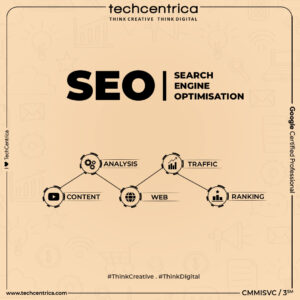You’re not running a casual blog or a side hustle. You operate in a high-stakes industry—finance, law, healthcare, enterprise software, or another niche where the margins are tight, the competition is elite, and the consequences of bad marketing are more than just a dip in traffic. In your world, “trial and error” isn’t a luxury. It’s a liability.
So when performance-based SEO gets pitched to you, it probably sounds like a calculated way to reduce risk. After all, why not pay only when results show up?
The truth? Performance-based SEO in high-stakes niches can either be a laser-sharp growth weapon—or a long-term trap disguised as a shortcut.
The difference lies in how you approach it, who you trust, and how the deal is structured. In this post, we’re going deep. You’ll walk away with a clear sense of when performance-based SEO works in high-stakes environments, when it backfires, and how to make sure you don’t pay for smoke and mirrors.
What “High-Stakes” Really Means in SEO
Let’s define the stakes before we get tactical.
You’re in a high-stakes niche if:
- A single client or conversion is worth thousands—if not millions.
- The sales cycle is long, nuanced, and involves multiple decision-makers.
- There are legal, ethical, or regulatory consequences for misinformation.
- Your competitors are investing heavily in long-term digital infrastructure.
These are not “content mill” markets. They’re categories where trust, authority, and precision matter just as much as visibility.
This isn’t about ranking for just any keyword. It’s about showing up credibly where it counts—and doing so in a way that aligns with legal, brand, and business strategy.
Why Performance-Based SEO Gets Complicated Fast
Performance-based SEO is seductive in any niche, but in yours, it comes with added layers of complexity:
Longer Time to ROI
In high-stakes niches, users don’t convert overnight. They research. They vet. They talk to sales. SEO wins take months to become revenue.
If your performance deal is tied to quick metrics—like first-page rankings or raw traffic—you’re incentivizing short-term behavior that doesn’t match your buyer’s path.
Tighter Compliance Standards
In healthcare, legal, or financial fields, content can’t just rank. It must be compliant. One inaccurate statement, outdated source, or aggressive call-to-action could invite lawsuits, audits, or regulatory scrutiny.
Does your SEO agency understand that?
Most don’t.
Higher Cost Per Click & Conversion
In Google Ads, you’d be paying $30–$150 per click in your space. That tells you how fierce organic competition is.
SEO content in these categories must be deep, well-cited, expert-reviewed, and high-converting—not spun fluff designed to meet an arbitrary word count.
The Wrong Kind of Performance Deal (And How to Spot It)
Here’s what most performance-based SEO offers actually look like, even in high-stakes markets:
- You only pay when a set of keywords reach a certain rank.
- The agency decides which keywords to target.
- There’s no guarantee that the traffic leads to business outcomes.
- The timeline for “performance” is narrow (often 60–90 days).
- You don’t see the full content strategy or backlink methods.
That’s not a performance deal. That’s a vendor bet where they manipulate easy metrics, collect a check, and disappear before anything meaningful converts.
Here’s what to watch for:
Metrics that stop at traffic or ranking
Vague keyword targets like “high volume” or “buyer intent” with no justification
No integration with your sales funnel or CRM
Minimal collaboration with your subject matter experts or legal team
No plan for scaling content authority over 6–12 months
These are signs the SEO agency is operating in a generalist way—using playbooks that might work in e-commerce but collapse under scrutiny in regulated or high-cost markets.
What Real Performance-Based SEO Looks Like in High-Stakes Niches
Done right, performance-based SEO isn’t just a billing model. It’s a partnership framework. That means shared incentives, mutual visibility, and total alignment.
Here’s what that looks like:
Performance Metrics That Map to Pipeline
Forget rankings. Real performance is marketing-qualified leads, sales-qualified meetings, proposals sent, or revenue influenced.
That doesn’t mean your SEO team controls the sale—but it does mean they should care about more than clicks. You should be measuring:
- First-touch and multi-touch attribution
- Funnel-stage content performance
- Conversion rates by content cluster
- Organic-assisted revenue over time
If the agency only cares about impressions, they’re not thinking big enough.
Content That’s Co-Created, Not Outsourced Blindly
In your field, generic writers don’t cut it. Real SEO performance in high-stakes niches comes from collaboration between:
- SEO strategists
- Subject matter experts (internal or external)
- Legal or compliance reviewers
- Content editors who understand tone, nuance, and intent
You don’t have time to micromanage that process, but you must stay looped in. Otherwise, you risk publishing “optimized” content that damages credibility or violates your industry’s standards.
Link Acquisition That’s Selective and Clean
Link building is part of the game, but in sensitive niches, spammy guest posts, PBNs, or link swaps are a disaster waiting to happen.
Ask your SEO partner:
- Where will these links come from?
- Are the domains relevant and respected in our niche?
- Will I have veto power over placements?
- Do we have a white-hat outreach strategy?
In high-stakes spaces, a bad backlink is worse than no backlink. You want earned authority, not rented risk.
A Timeline That Reflects Real Buyer Behavior
Performance-based SEO shouldn’t rush outcomes to hit short-term targets. If your average sales cycle is 90 days, and your market requires deep research, your SEO strategy should account for that—not pretend your funnel is transactional.
A solid performance model should project:
- Content ramp-up (3–4 months)
- Authority building (6 months)
- Conversion lift (6–12+ months)
If the pitch is all about month-two magic, it’s not built for your world.
Shared Tech Stack, Shared Dashboards, Shared Language
Your SEO partner should speak the language of your revenue ops team. That means syncing with:
- HubSpot, Salesforce, or your CRM
- Google Analytics, GA4, or Looker Studio dashboards
- Lead scoring systems
- Attribution tools
They should show you what’s working and what’s lagging—not bury it in reports.
If the only “performance” you see is from a proprietary dashboard you didn’t approve, you’re flying blind.
Building a Performance-Based Deal That Actually Works
If you’re serious about using performance-based SEO as a lever in your high-stakes niche, here’s how to structure it for success.
Define Performance Together
You can’t outsource the definition of success. Build a shared scorecard with your agency that includes:
- Qualified leads or conversions
- Content engagement on key pages
- Share of voice for priority clusters
- Authority metrics (e.g. domain mentions, citations)
Co-Own the Strategy
Don’t just “approve topics.” Co-create your content pillars based on:
- Sales call recordings
- Keyword gaps vs competitors
- Buyer objections and myths
- Legal clarity around what you can say
Make sure the topics support intent, not just volume.
Tie Payment to Clear, Tiered Milestones
Instead of a single “pay when it ranks” model, create a tiered incentive structure:
- X for baseline rankings
- Y for traffic growth
- Z for SQLs or pipeline influenced
This lets both sides win gradually—and makes performance visible at every stage.
Insist on Monthly Transparency Reviews
Hold a standing 60-minute meeting monthly. Review:
- What was created
- What moved the needle
- What needs to pivot
- What next month’s focus is
This isn’t micro-management. It’s strategic alignment.
When NOT to Use Performance-Based SEO in High-Stakes Niches
Ironically, there are times when performance-based SEO is the wrong fit—especially if you’re in a regulated, emerging, or relationship-driven category.
Avoid performance models if:
- You don’t have clarity on your ICP and journey yet.
- Your site is brand new and lacks authority.
- You don’t have internal resources to support compliance or review.
- Your offer changes frequently, and messaging isn’t stable.
- The agency has no prior success in your vertical.
In these cases, a retainer-based model with tight collaboration may offer more control and quality over speed.
Final Thought: Performance Isn’t Just Payment—It’s Partnership
In high-stakes niches, performance-based SEO is only as good as the strategy, transparency, and integrity behind it.
If the agency chasing your signature treats SEO like a volume game, they don’t belong in your world.
But if they listen first… show receipts… build custom strategies… align on outcomes…
Then performance-based SEO can give you something rare: a partner who shares your pressure and skin in the game.
Just make sure the contract isn’t the only thing holding them accountable. The work—and the results—should speak for themselves.






